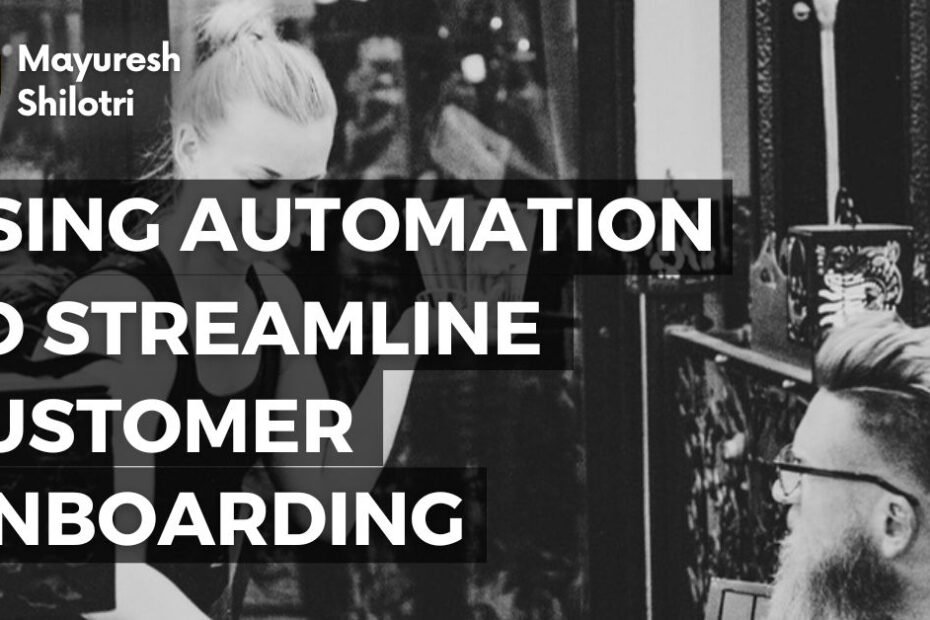Automation in customer onboarding has emerged as a transformative force for businesses across various sectors. One of the most significant benefits is the enhancement of the customer experience. By automating repetitive tasks, companies can ensure that new customers receive timely and consistent communication.
For instance, automated welcome emails can be sent immediately after a customer signs up, providing them with essential information and resources. This immediate engagement not only makes customers feel valued but also sets a positive tone for their relationship with the brand. Furthermore, automation can facilitate a smoother transition for customers by guiding them through the onboarding process with interactive tutorials or step-by-step instructions, thereby reducing confusion and frustration.
Another critical advantage of automation is the ability to scale onboarding processes without compromising quality. As businesses grow, the volume of new customers often increases exponentially. Manual onboarding can become a bottleneck, leading to delays and potential dissatisfaction among new users.
Automated systems can handle large volumes of onboarding tasks simultaneously, ensuring that each customer receives the attention they need without overwhelming staff. For example, a software company might implement an automated onboarding platform that allows multiple users to complete their setup simultaneously, freeing up human resources to focus on more complex customer inquiries or support issues. This scalability not only improves operational efficiency but also enhances customer retention rates by ensuring that all new users have a positive initial experience.
Key Takeaways
- Automation streamlines the customer onboarding process, reducing manual work and improving efficiency.
- Automated onboarding systems should have features like customizable workflows, document management, and integration with existing systems.
- Best practices for implementing automation include setting clear goals, involving all stakeholders, and providing adequate training.
- Challenges in automating onboarding include data security, system integration, and resistance to change from employees.
- Metrics for evaluating automated onboarding success include time to onboard, customer satisfaction, and error rates.
How Automation Can Improve Efficiency in the Onboarding Process
The efficiency of the onboarding process is significantly enhanced through automation, which streamlines various tasks that would otherwise require manual intervention. One of the primary areas where automation shines is in data collection and management. Automated systems can gather essential information from new customers through online forms, surveys, or integrations with existing databases.
This data is then processed and stored without the need for human input, reducing the likelihood of errors and ensuring that customer profiles are accurate and up-to-date. For instance, a financial services firm might use an automated onboarding tool to collect KYC (Know Your Customer) information, ensuring compliance while minimizing the time spent on paperwork. Moreover, automation can facilitate real-time tracking and reporting of onboarding progress.
Businesses can utilize dashboards that provide insights into how many customers have completed each step of the onboarding process, allowing for quick identification of bottlenecks or areas needing improvement. This level of visibility enables organizations to make data-driven decisions to optimize their onboarding strategies continually. For example, if analytics reveal that a significant number of customers drop off after a particular step, businesses can investigate and refine that part of the process to enhance user experience.
By leveraging automation in this way, companies can not only improve efficiency but also create a more responsive onboarding process that adapts to customer needs.
Key Features to Look for in an Automated Onboarding System
When selecting an automated onboarding system, several key features should be prioritized to ensure it meets the specific needs of the organization. First and foremost, user-friendly interfaces are crucial. An intuitive design allows both customers and internal teams to navigate the system with ease, minimizing the learning curve associated with new technology.
For instance, a platform that offers drag-and-drop functionality for creating onboarding workflows can empower non-technical staff to customize processes without needing extensive training. Another essential feature is integration capabilities with existing tools and systems. An effective automated onboarding solution should seamlessly connect with Customer Relationship Management (CRM) systems, email marketing platforms, and other software used by the organization.
This integration ensures that data flows smoothly between systems, reducing redundancy and enhancing overall efficiency. For example, if a company uses Salesforce as its CRM, an automated onboarding system that integrates with Salesforce can automatically update customer records as they progress through the onboarding stages. This not only saves time but also ensures that all teams have access to the most current information about each customer.
Best Practices for Implementing Automation in Customer Onboarding
Implementing automation in customer onboarding requires careful planning and execution to maximize its effectiveness. One best practice is to start small and gradually scale up automation efforts. Organizations should identify specific tasks within the onboarding process that are repetitive and time-consuming, such as sending welcome emails or scheduling follow-up calls.
By automating these initial tasks, businesses can gauge the impact on efficiency and customer satisfaction before expanding automation to more complex areas. Additionally, involving stakeholders from various departments during the implementation phase is crucial for success. Input from sales, marketing, customer support, and IT teams can provide valuable insights into how automation can best serve the organization’s goals.
For instance, customer support teams may highlight common pain points experienced by new users during onboarding, which can inform the design of automated workflows that address these issues proactively. Regular feedback loops should also be established post-implementation to continuously refine and improve automated processes based on real-world experiences.
Overcoming Challenges in Automating the Onboarding Process
While automation offers numerous benefits for customer onboarding, organizations may encounter challenges during its implementation. One common hurdle is resistance to change from employees who may be accustomed to traditional methods of onboarding. To address this challenge, it is essential to communicate the advantages of automation clearly and provide adequate training to staff members.
Demonstrating how automation can alleviate their workload and enhance their ability to serve customers can help foster a more positive attitude toward new technologies. Another challenge lies in ensuring that automated processes do not sacrifice personalization in customer interactions. Customers often appreciate a human touch during onboarding, especially when they have questions or concerns.
To overcome this issue, businesses should consider implementing hybrid models that combine automation with human support. For example, while automated emails can provide essential information and resources, having dedicated account managers available for one-on-one consultations can enhance the overall experience. Striking this balance between efficiency and personalization is key to successful automated onboarding.
Measuring Success: Metrics for Evaluating Automated Onboarding
To assess the effectiveness of an automated onboarding process, organizations must establish clear metrics for evaluation. One critical metric is the time taken for customers to complete the onboarding process. By tracking this duration before and after implementing automation, businesses can quantify improvements in efficiency.
A reduction in onboarding time often correlates with higher customer satisfaction rates, as users appreciate a streamlined experience. Another important metric is customer retention rates following onboarding completion. An effective onboarding process should not only facilitate initial engagement but also lay the groundwork for long-term loyalty.
By analyzing retention rates over time, organizations can determine whether their automated onboarding efforts are translating into sustained customer relationships. Additionally, gathering feedback through surveys or Net Promoter Scores (NPS) can provide qualitative insights into how customers perceive their onboarding experience and identify areas for further enhancement.
The Role of Personalization in Automated Onboarding
Personalization plays a pivotal role in enhancing the effectiveness of automated onboarding processes. While automation streamlines tasks and improves efficiency, it is essential to ensure that customers feel recognized and valued throughout their journey. One way to achieve this is by utilizing data collected during the signup process to tailor communications and resources to individual preferences or needs.
For instance, if a new user indicates interest in specific features during registration, automated emails can highlight those features in subsequent communications. Moreover, incorporating personalized touchpoints within automated workflows can significantly enhance user experience. For example, sending personalized video messages from account managers or tailored welcome kits based on user profiles can create a sense of connection even in an automated environment.
This approach not only fosters engagement but also reinforces brand loyalty by demonstrating that the company understands and cares about its customers’ unique needs.
Future Trends in Automation for Customer Onboarding
As technology continues to evolve, several trends are emerging in the realm of automation for customer onboarding that organizations should be aware of. One notable trend is the increasing use of artificial intelligence (AI) and machine learning algorithms to enhance personalization further. These technologies can analyze vast amounts of data to predict customer behavior and preferences more accurately than ever before.
For instance, AI-driven chatbots can provide real-time assistance during onboarding by answering questions based on previous interactions or common inquiries from similar users. Another trend is the growing emphasis on omnichannel experiences in automated onboarding processes. Customers today engage with brands across multiple platforms—websites, mobile apps, social media—and expect a seamless experience regardless of where they interact with a company.
Future automated onboarding systems will likely integrate various channels to ensure consistent messaging and support throughout the customer journey. This could involve synchronizing email campaigns with in-app notifications or providing support through live chat on websites while maintaining continuity with automated workflows. In conclusion, as businesses increasingly recognize the importance of efficient and effective customer onboarding processes, automation will play an integral role in shaping these experiences.
By leveraging technology thoughtfully and strategically, organizations can enhance customer satisfaction while optimizing their internal operations.





